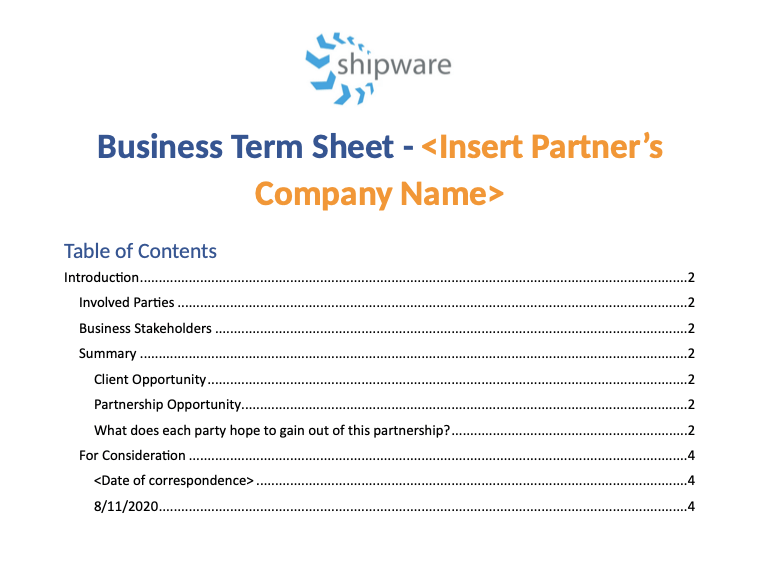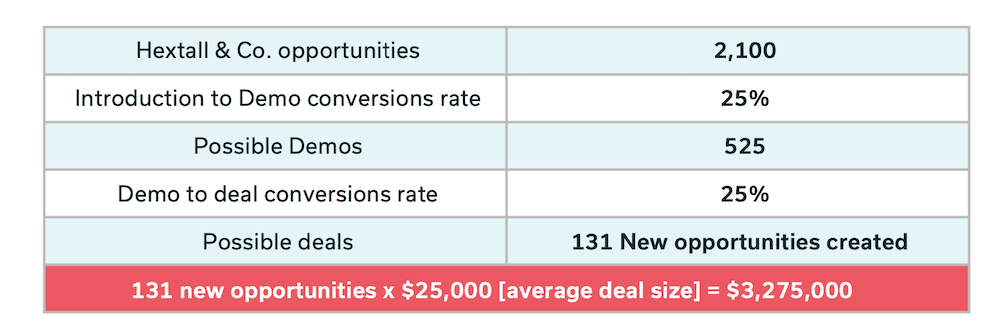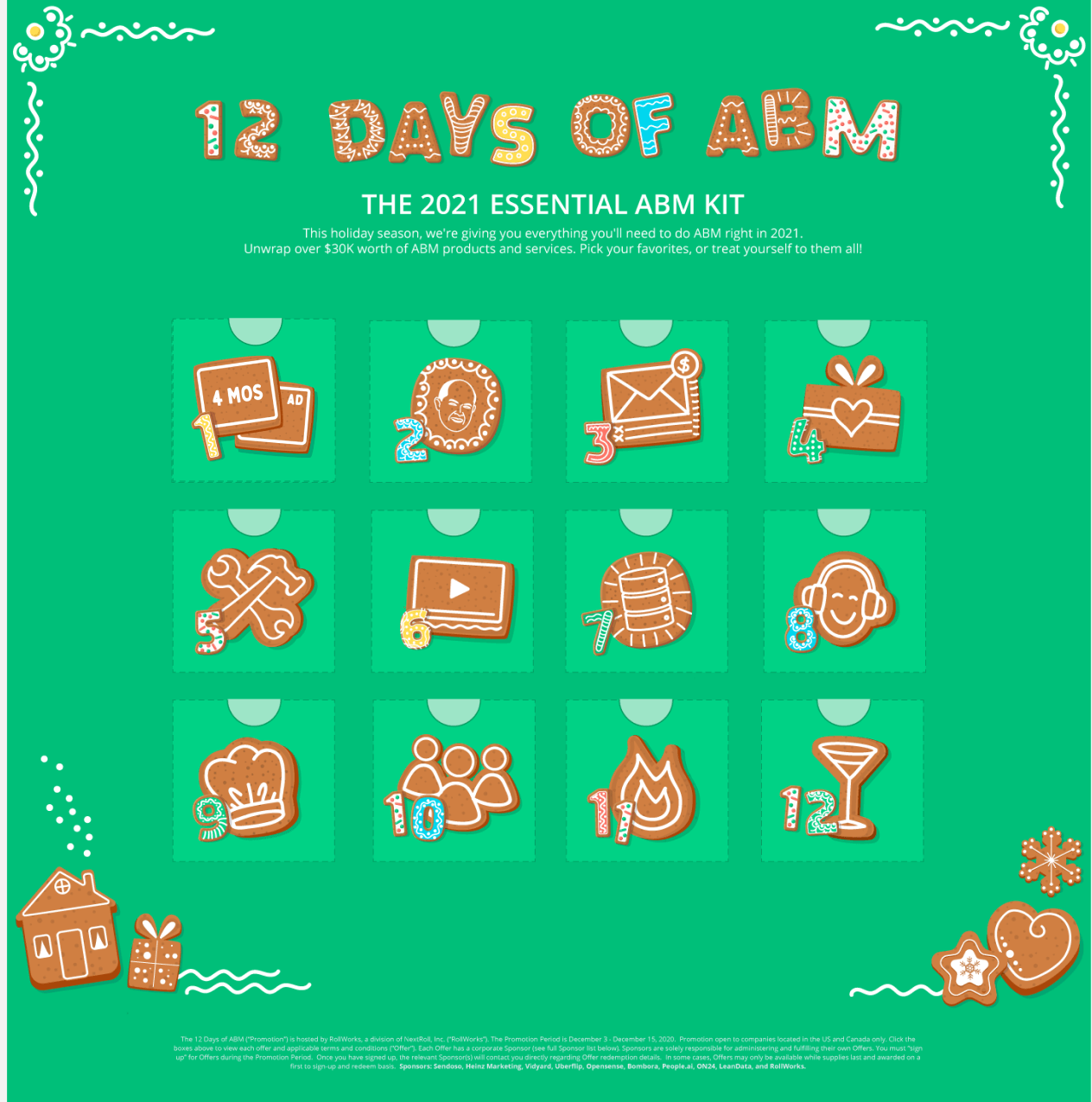You’ve got an inbox full of partnership inquiries (Woohoo!). But, wait, why are your palms so sweaty? Maybe you’re thinking of all the work developing 20 partnerships at once requires, or maybe you don’t know which partnerships will deliver results that won’t disappoint.
How do you sort through the noise to identify partnerships with the best ROI? You know, the most deals won, the most partner-influenced revenue, and the least amount of stress-inducing headaches.
We’ve put together a list of seven questions to ask yourself for vetting potential partners — before signing an all-hands-on-deck partnership agreement.
1. Do Your ICPs Overlap?
As a refresher, your ideal customer profile (ICP) dictates the type of customer prone to a higher conversion rate.
For example, maybe your ICP includes companies with more than 100 employees, with more than 200 customers, and that use products like Marketo Engage in their tech stack.
Channel partners sell directly to your ICP on your company’s behalf or refer ecosystem qualified leads to your sales team. Hero Digital, for example, sells Marketo Engage projects directly to prospects in the experience company’s existing pipeline. The digital agency also focuses on multi-division selling to help its tech partners access additional branches within global organizations like Danaher.
Tip: Develop role-based partner pairing for your outbound sales reps and your partners’ sales reps to fuel more ecosystem qualified leads. Allow your reps to score your partners’ reps based on their quality and quantity of referrals. Use this to evaluate your partnerships and re-open the conversation with your partners where applicable.
If your focus lies in technology partnerships, you may be looking to develop an integration that helps your company gain ecosystem qualified leads. Reactful’s integration with Marketo Engage connects the former’s personalization data with the latter’s lead management data for a better understanding of the customer journey.
The integration increases each company’s stickiness in the ecosystem and improves their customer retention. Additionally, Marketo Engage customers may be more likely to choose Reactful (a certified partner) when shopping around for personalization platforms in Marketo’s marketplace.
Tip: Filter a list of the prospects you’re targeting and map accounts with your partner to see if they can help you access them.
Keep in mind: Your ICPs matching up means nothing if your partner isn’t meeting the quota you’ve agreed upon for referrals (skip ahead to our section about term sheets for more).
2. Does Your Potential Partner Fit Into Your IPP?
Just as you have a list of criteria for evaluating your customers and their likelihood of converting, you should also have a list of factors for evaluating your partners.
Different partners serve different purposes (think: a one-off Slack integration versus a multi-year co-marketing engagement with Salesforce). Each of these examples can influence your customer acquisition and integration adoption metrics, but the commitment from your team is different.
Determine your ideal partner profile (IPP) for each of your partnership categories — channel, technology, and strategic — and operationalize your team with a scoring system for quick “yeas” or “nays.”
A few considerations you could factor into your IPP:
- Buy-in from your counterpart’s partnerships team and other relevant departments (like marketing, the dev team, sales, and so on)
- Budget allocated towards partnership development
- Their customers fitting into your ICP and/or you’re targeting the same new markets
- Their partner ecosystem includes companies you’d like to partner with
You can also use your IPP to create different buckets for prioritizing your partners through “partner tiers.”
3. Do You and Your Partner Have a Similar Level of Partnership Program Maturity?
Maybe you’re running a mature partnership program but your partner’s program is a few years behind. That’s a red flag. For example, if your partner doesn’t have buy-in from their marketing team, you better believe your team will be pulling all the weight.
That year-long webinar schedule? Get ready for some long workdays (sushi’s on us!).
The maturity of your partnership program sums up to your:
- Investment in Ecosystem Ops to scale your partnerships program efficiently with your partners and your internal team
- Level of buy-in from leadership and department stakeholders to invest time and budget towards partnerships
- Resources available to you, such as tools like partner relationship managers (PRMs) and partner ecosystem platforms (PEPs)
- Budget allocated towards partnership development (for co-marketing campaigns involving live events, paid advertising, and other collateral)
- Size or influence of your partner ecosystem (Consider how one strategic partner can open doors to other partners further down the line or lead to an acquisition)
- Revenue your program produces by way of combining the aforementioned factors
A mature partnership program has proven the benefits of partnerships on a large scale (think: Mike Stocker, VP of Strategic Partnerships at ABM platform RollWorks influenced a 50% adoption rate for the company’s Bombora integration in just over six months).
Greg Unruh, Director of Partner Strategy and Channel Sales of shipping SaaS company Shipware and Consultant at Partnernomics, develops a term sheet to put the partnership discussion to paper prior to signing an official contract. The term sheet helps Unruh and his partners define the business case for the partnership, outline the expectations, and identify potential roadblocks (like leadership buy-in).
“A lot of times when you get into a partnership discussion, the first thing that happens is you toss back and forth a mutual NDA, which is part of due diligence,” says Unruh. “And then you start sharing agreements. And all of a sudden, you’re trying to navigate legal language and figure out ‘What is the business intent of this partnership? Where are we going with this?’”



 Images courtesy of Shipware
Images courtesy of Shipware
4. Does Your Team Have a Detailed Understanding of Your Partner’s Business?
Your team needs to understand the value of your partner’s products, and you need to understand your partner’s business goals.
Connor Remaley, Director of Global Partnerships at medical device QMS software company Greenlight Guru, says they aim to fulfill their partners’ needs before their own.
“Know your partner’s business,” says Remaley. “If you were running their business, what vision would you have for them? That’s how we work to build the engagement that we’re going to have with partners. You’re going to build more loyalty. You’re going to build trust, and then you’re also putting more raw materials in front of them for them to speak to knowledgeably about your product.”
George Haenisch, VP of Alliances at Hero Digital, is developing ways to share knowledge with his client services team about their partner ecosystem. To do so, Haenisch and his team are putting together a wiki-like research hub.

The research hub will include the basics — like information about their partners’ products, co-selling messaging, and so forth — as well as deal projections to forecast the actual revenue associated with each opportunity.
“We help our team understand where we’re at so we can size a project appropriately and we don’t come in and say, ‘We think it’s a $1,000,000 project,’ when it’s actually a $100,000 project,” says Haenisch.
In addition to investing time in enabling your team, you may also need to provide direct support for co-selling. Although Haenisch reports to the CMO, he participates in weekly sales calls to help his reps with existing partnership opportunities.
5. Does Your Partner Want to Learn About Your Business?
Many companies with mature partnership programs are beginning to invest more heavily in partner enablement. Enabling your partners includes helping them sell your products on your behalf and, in the case of agencies like Hero Digital, implementing the product for the end-customer.
Take Vidyard, for example. The online video platform’s four-phase enablement program has led to a 70% boost in agency partner retention, a 75% increase in agency partners, and doubling their agency partner revenue.
Alternatively, Greenlight Guru has turned to its best-performing partners to educate other partners in its ecosystem.
“Some of our partners caught on, ramped quickly, and are doing very well with referring business to us. They’re now mentoring the newer, and in some cases underperforming, partners to say, ‘Here’s what worked for me,’ and ‘Here’s how I grew my business,’” says Connor Remaley. “We have to make sure we’re helping them grow and supporting their business before we’re asking them, ‘Why are you not referring?’”.
Other programs have partner tiers that require the completion of enablement tasks to move from one tier to the next — like various levels of certification. Establishing tiers or investing in a learning management software (LMS) can help your partners become experts in your product (and prevent you from wasting resources on an unengaged partner).
6. Does The Partnership’s Immediately Addressable Market Satisfy Your KPIs?
Account mapping can help you determine if you should pursue a tech, channel, or strategic partnership with your partner. It can also help you forecast the immediately addressable market (TAM).
Just take this example from our Partner Playbook, depicting 2,100 existing overlaps between hypothetical partner Hextall & Co.’s customers and your prospects (That’s a lot of potential intros!). If your average deal size is $25,000, then…

Mapping accounts with your partner should be one of the first steps after the initial “We should consider partnering together” conversation. You can join (or log in to) Crossbeam for free, upload your populations, and invite your partners to do the same.
7. Can Your Partner(s) Establish Your Company’s Position in the Ecosystem?
You’ve made it to the final, and perhaps most important, question. Can your partner(s) make your company indispensable to everyone they know?
Ecosystem is everything.
In his RJMetrics post-mortem, Crossbeam CEO Bob Moore stated, “Your place in an ecosystem of tech partners is just as important, if not moreso, than the quality of your product itself.”
Your best partners are like your older, cooler siblings. By letting you walk the halls of the ecosystem with them, they’re vouching for you as a “cool kid” to everyone they know — including all of their customers and partners.
Look for partners who can give you that “multiplier effect.” In other words, partners who will align your brand with theirs to show their customer and partner networks that your company and products are valuable.
In December of 2020, the team at RollWorks wanted to make a splash with their new ecosystem of technology partners (note the plural). To combat the December slowdown, they developed an Advent-calendar-inspired holiday campaign that would include 10 of their partners and drive ecosystem qualified leads for each of them.
“We’re looking at this as a way to make a splash with our new tech partners,” says Stacy Milman, Principal Partner Marketing manager at RollWorks. “We’re trying to help our sellers have a decent pipeline coming into 2021. So we’re maximizing this time and creating that multiplier effect with our partners.”

Uberflip, Vidyard, Heinz Marketing, Opensense, LeanData, People.ai, Sendoso, ON24, and Bombora participated in the campaign. They offered gifts like discounted packages, direct mail samples, digital workshops, and a private cooking experience with the host of Top Chef Canada.

 Images courtesy of RollWorks
Images courtesy of RollWorks
RollWorks has established a path to all nine of its tech partners’ customer and partner networks in a single, cutely bundled co-marketing campaign.
By promoting the Advent calendar, partners like LeanData not only generate ecosystem qualified leads for RollWorks but also vouch for them as part of their ecosystem. LeanData’s customers are more likely to adopt RollWorks as their ABM platform of choice, and LeanData’s partners are more likely to partner with RollWorks as a result.
Meanwhile, the team at Hero Digital looks to platform players like Oracle, Salesforce, Adobe, and Acquia to help them fulfill their customers needs and build on their solutions.
“We want to get 10 customers for as long as we can — to grow from a $500,000 project to a $10,000,000 per year account. We can do that with our partner network,” says George Haenisch. “I’m going to client success folks and saying, ‘Here are our partners, what are your business problems? We’ve got solutions we can offer that your customers are looking for, let’s marry it together.’”
Hero Digital has established a network of partners with high-demand products and buildable solutions for their project-based customers. Platforms like Yext and Hootsuite vouch for Hero Digital through referrals — regarding the digital agency as a trusted (and oftentimes certified) solution practitioner.
Tip: You can take a look at the size and scope of individual partner ecosystems on Partnerbase. Pick a company, scroll through to see its ecosystem and partner directory, and then choose your own adventure from there!
Psst! Our State of the Partner Ecosystem 2021 launched on January 28, 2021. Catch up on insights from more than 170 partnership professionals here!
—
Go into the partnership discussion with a discerning eye, and the results will follow.




This is a test comment.
This is a longer test comment to see how this looks if the person decides to ramble a bit. So they're rambling and rambling and then they even lorem ipsum.